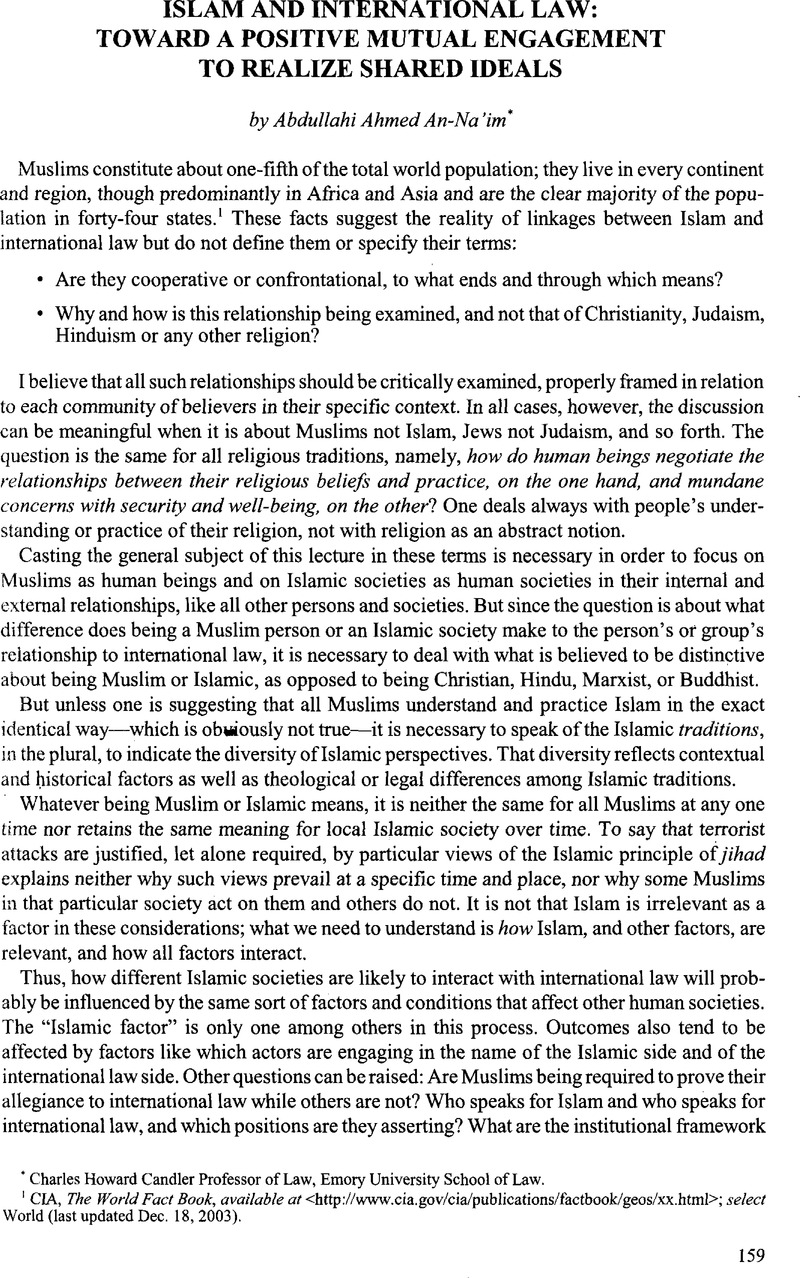Published online by Cambridge University Press: 28 February 2017

1 CIA, The World Fact Book, available at <http://www.cia.gov/cia/publications/factbook/geos/xx.html>; select World (last updated Dec. 18, 2003).
2 Arjun Appadurai, Disjuncture and Difference in the Global Cultural Economy in the Cultural Studies Reader 220-30 (1993).
3 Chamey, Jonathan I., Universal International Law, 87 AJIL 529 (1993)Google Scholar.
4 See, generally, Bernard G. Weiss, The Spirit of Islamic Law (1998); Devin J. Stewart, Islamic Legal Orthodoxy: Twelvers Shiite Responses to the Sunnia Legal System (1998); And Wael B. Hallaq, Authority, Continuity and Change in Islamic Law (2001).
5 Weiss, supra note 4, at 116.
6 Westbrook, David A., Islamic International Law and Public International Law: Separate Expressions of World Order, 33 Va. J. Int’l L. 819 (1993)Google Scholar.
7 Id., at 821, 826.
8 Id., at 828.
9 Id., at 829.
10 Cockayne, James, Islam and International Humanitarian Law: From a Clash to a Conversation Between Civilizations, 84 Int’l Rev. Red Cross 597 (2002)CrossRefGoogle Scholar
11 Id., at 599.
12 Id., at 604.
13 Id., at 608.
14 Id., at 611.
15 Article 9 emphasizes that the Court as a whole should represent the main forms of civilization and the principal legal systems of the world; Article 3 8 (3) provides that the International Court of Justice should apply, inter alia, “[t]he general principles of law recognized by civilized nations.”
16 Cockayne, supra note 10, at 612.
17 Id., at 615.
18 Id., at 616.
19 Id., at 624.
20 See, generally, Abdullahi Ahmed An-Na’Im, Toward an Islamic Reformation: Civil Liberties, Human Rights and International Law (1990).